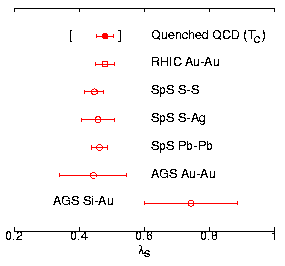About the collaboration
ILGTI is a loose collaboration of many Indian lattice gauge theorists who share resources and work. We are open to new members joining the collaboration. If you have a regular faculty position anywhere in India and would like to join the ILGTI, please contact us.
What we do
A short description
We are interested in the physics of matter in extreme conditions. An example of this is matter at temperatures in excess of 2 trillion degrees (2.1012 Kelvin or 175 MeV). Under such conditions matter takes extremely different forms and has peculiar properties. We compute the properties of such matter from a fundamental theory using supercomputers. Our computations are used in predicting results of experiments at CERN (Geneva) and BNL (New York). They also have implications for the evolution of the universe.
We are also interested in the structure and properties of composite particles which have strong interactions. In particular, we examine the properties of particles called glueballs, or particles with four or five quarks, or particles with heavy quarks. Collider experiments look for such exotic particles, and have already found a few.
One of our results

The Wroblewski parameter, λs, as inferred from experiments measures the relative yield of strange and light quarks. It has been measured on the lattice as the ratio of quark number susceptibilities for strange and light quarks. The continuum limit in quenched QCD has been found (brackets are estimates of unquenching errors) and it agrees well with data.
Jobs, projects and teaching
We could certainly do with your help: whether you are a reasearch scientist, or a student. If you are a teacher and you would like to talk to us, we welcome contact. See our page on jobs, projects and contact for more details.